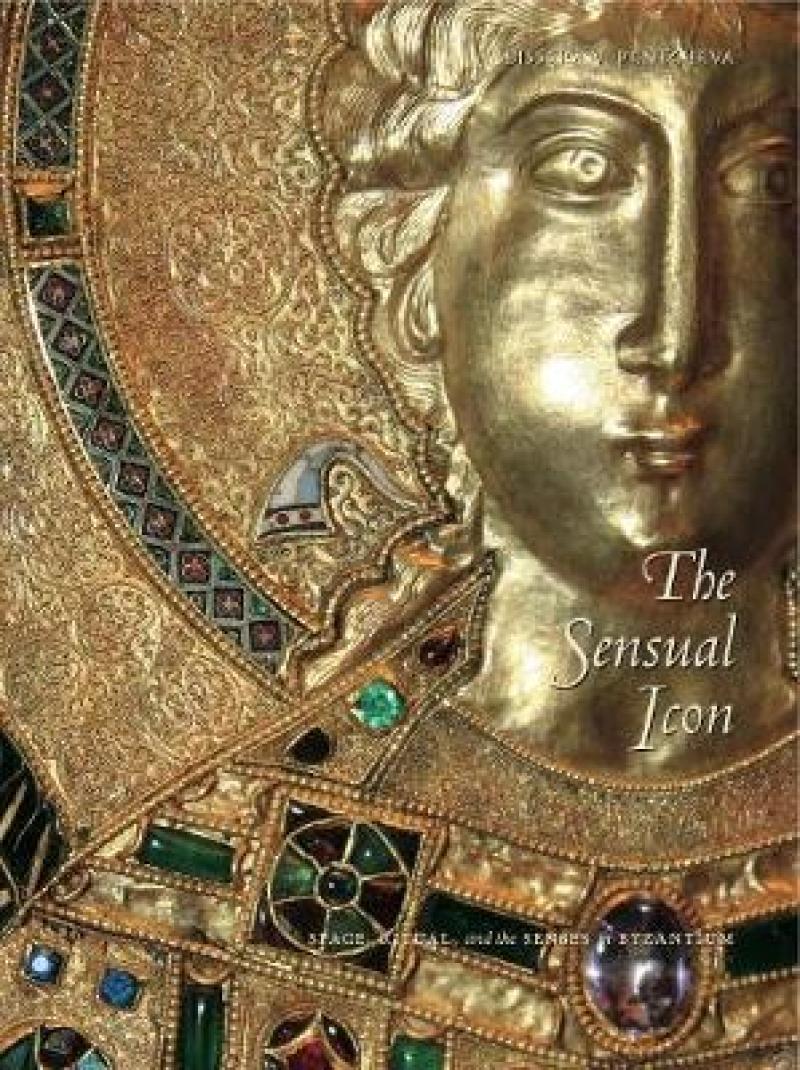<p>"<i>The Sensual Icon</i> is a major new contribution to Byzantine art history and will be an important turning point in our understanding of the aesthetics and reception of the icon in Byzantium."</p><p>-Henry Maguire, The Johns Hopkins University</p><br /><p>"<i>The Sensual Icon </i>is a dazzling book, rich in content, brilliant in argumentation, and impressively original. Tracing cross-currents of production, perception, and thinking about the sacred icon within a firm historical context, it proposes a radical reconceptualization of the major form of Byzantine artistic expression. </p><p>"A work of flawless scholarship and spirited imagination, <i>The Sensual Icon</i> animates a remarkable artistic legacy and the historical and theological forces that engendered it. Like Hans Belting's <i>Likeness and Presence</i>, it is destined to guide a whole generation's view of medieval art."</p><p>-Herbert L. Kessler, The Johns Hopkins University</p><br /><p>"In this, far and away the most ambitious new account of the Byzantine icon, Pentcheva explores the powers and limits of visualization. A book sure to have resonance way beyond its field."</p><p>-Joseph Koerner, Harvard University</p><br /><p>"Bissera Pentcheva's book represents a new departure in Byzantine studies; it focuses on relief icons rather than painted icons. The author introduces a long-needed phenomenological approach by studying the conditions of the icons' perceptual experience. <i>The Sensual Icon</i> needs and deserves a discussion of its attempt to link icon aesthetics and icon politics."</p><p>-Hans Belting</p><br /><p>"Bissera Pentcheva's stimulating <i>The Sensual Icon: Space, Ritual, and the Senses in Byzantium . . .</i> functions on the cutting edge of art historical method, drawing not only on recent trends in the study of visual and material culture but also [on] anthropology and film theory. . . . This is a volume that will transform the discipline of medieval art."</p><p>-Rebecca W. Corrie, <i>Studies in Iconography</i></p><br /><p>"Pentcheva's preferred direction is away from 'lifelikeness' towards the 'living icon', an image that 'was literally 'in-spirited' (empsychos, empnous, from <i>pneo</i> and <i>pneuma</i>, 'to breathe and breath'), receiving human breath and responding with a spectacle of shimmer and glimmer' (p. 122). Her works trace the philosophical and sensual emergence of the living image, the <i>eikon</i>, no longer understood as the flat painted panel of the sixth to ninth centuries, nor only as the metal bas-relief icon that dominated in eleventh-century Constantinople, but rather as the ideas that shaped both."</p><p>-Paul Stephenson, <i>Oxford Art Journal</i></p>
Today we take the word "icon" to mean "a sign," or we equate it with portraits of Christ and the saints. In The Sensual Icon, Bissera Pentcheva demonstrates how icons originally manifested the presence of the Holy Spirit in matter. Christ was the ideal icon, emerging through the Incarnation; so, too, were the bodies of the stylites (column-saints) penetrated by the divine pneuma (breath or spirit), or the Eucharist, or the Justinianic space of Hagia Sophia filled with the reverberations of chants and the smoke of incense. Iconoclasm (726-843) challenged these Spirit-centered definitions of the icon, eventually restricting the word to mean only the lifeless imprint (typos) of Christ's visual characteristics on matter.
By the tenth century, mixed-media relief icons in gold, repousse, enamel, and filigree offered a new paradigm. The sun's rays or flickering candlelight, stirred by drafts of air and human breath, animated the rich surfaces of these objects; changing shadows endowed their eyes with life. The Byzantines called this spectacle of polymorphous appearance poikilia, that is, presence effects sensually experienced. These icons enabled viewers in Constantinople to detect animation in phenomenal changes rather than in pictorial or sculptural naturalism. "Liveliness," as the goal of the Byzantine mixed-media relief icon, thus challenges the Renaissance ideal of "lifelikeness," which dominated the Western artistic tradition before the arrival of the modern. Through a close examination of works of art and primary texts and language associated with these objects, and through her new photographs and film capturing their changing appearances, Pentcheva uncovers the icons' power to transform the viewer from observer to participant, communing with the divine.
Explores the Byzantine aesthetic of fugitive appearances by placing and filming art objects in spaces of changing light, and by uncovering the shifting appearances expressed in poetry, descriptions of art, and liturgical performance.
Contents
List of Illustrations
Acknowledgments
Introduction
1. Imprinted Images: Eulogiai, Magic, and Incense
2. Icons of Sound: Hagia Sophia and the Byzantine Choros
3. Eikon and Identity: The Rise of the Relief Icon in Iconophile Thought
4. The Imprint of Life: Enamel in Byzantium
5. Transformative Vision: Allegory, Poikilia, and Pathema
6. The Icon's Circular Poetics: The Charis of Choros
7. Inspirited Icons, Animated Statues, and Komnenian Iconoclasm
Epilogue: The Future of the Past
Appendix 1: The Icons in the Monastic Inventories of the Eleventh and Twelfth Centuries
Appendix 2: Byzantine Enamel Icons and the West, Eleventh-Twelfth Centuries
Notes
Bibliography
Index
Produktdetaljer
Biografisk notat
Bissera V. Pentcheva is Associate Professor of Art History at Stanford University. She is the author of Icons and Power: The Mother of God in Byzantium (Penn State, 2006).
